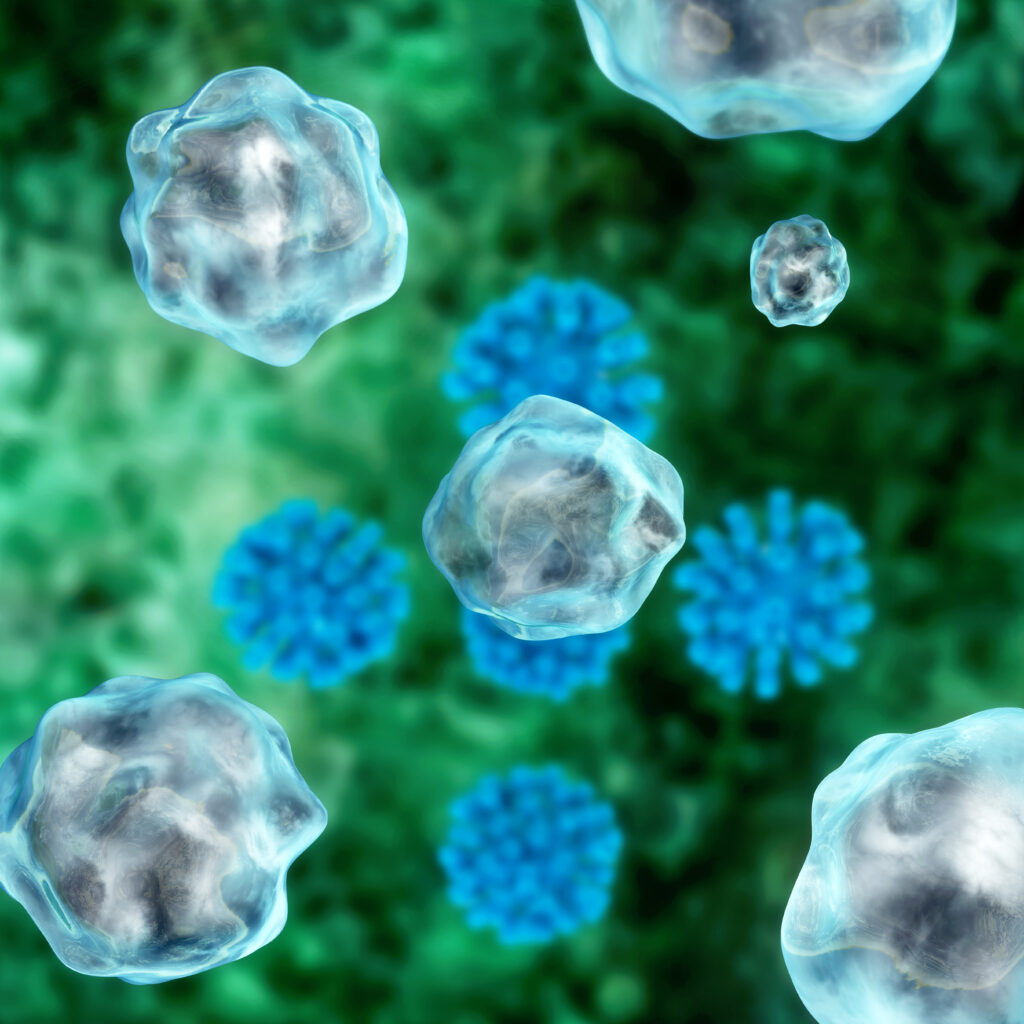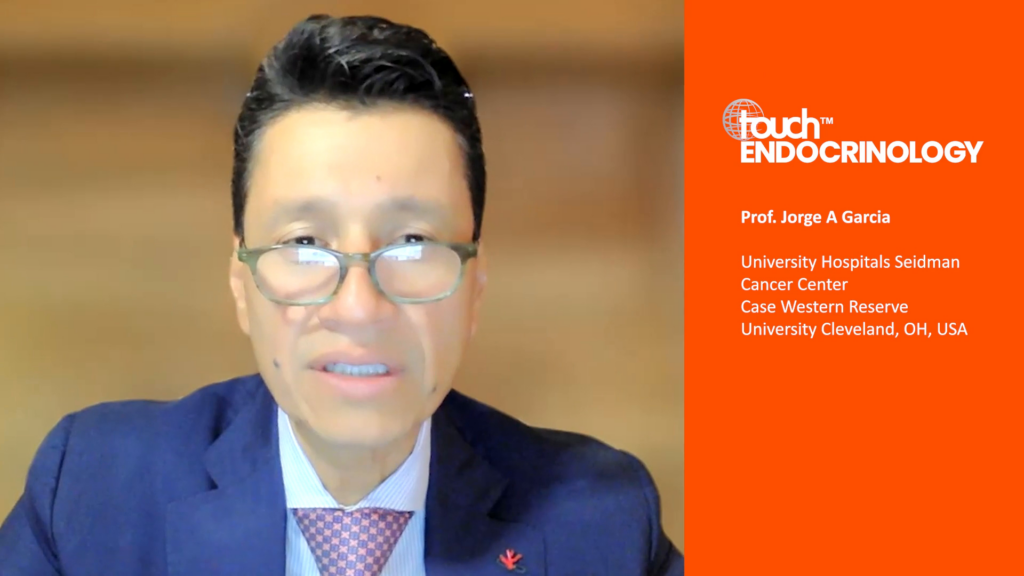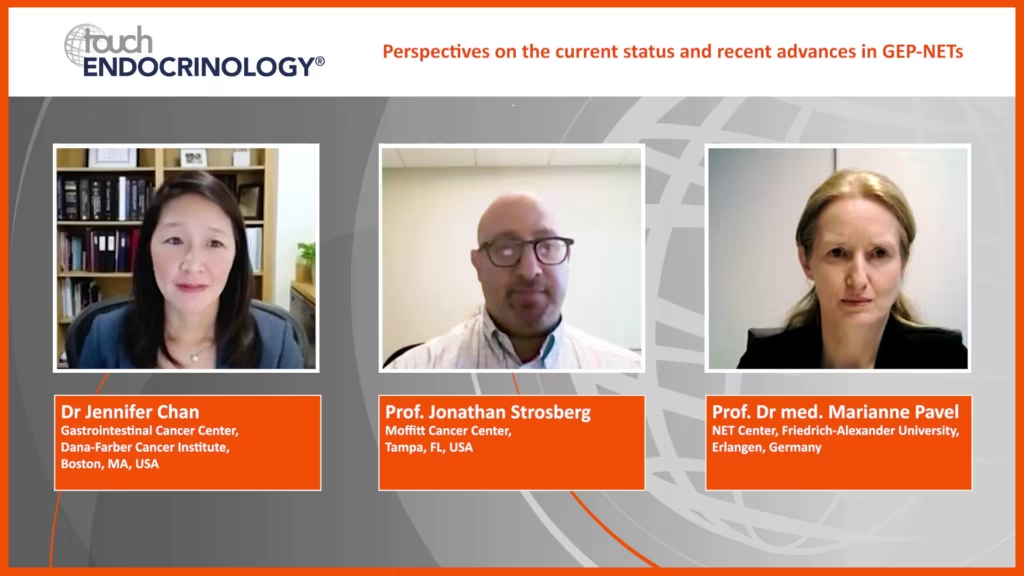Endocrine Oncology
An Introduction to Endocrine Oncology
Endocrine oncology encompasses malignancies of hormone-producing glands such as the thyroid, parathyroid, pituitary and adrenal gland, as well as endocrine tumours of the gastrointestinal tract and pancreas. While some of these malignancies are relatively rare, thyroid cancer is the most commonly diagnosed cancer in people aged 15–29 years. These cancers present a therapeutic challenge as chemotherapy is often ineffective, and the proliferation rate and the mutational load are usually very low. Advances include small-molecule kinase inhibitors, I-124-positron emission tomography and computed X-ray tomography-based selection of optimal therapeutic strategies, peptide receptor radionuclide therapy with somatostatin receptor antagonists, cell-based therapies and novel immunotherapies.
Browse video highlights and short articles from the conference hub, providing insights into the latest updates from major conferences and peer-reviewed articles from the journal portfolio. This is complemented by a range of educational activities from our expert faculty, with patient outcomes at the forefront.

Physician burnout is at a critical point. In this episode, Nicky speaks with Dr Alfred Atanda about why so many physicians are burning out and what can be done to change the trend. From personal experience to system-wide solutions, Dr Atanda shares valuable insights on improving physician well-being and building a more effective healthcare culture.

Dr Svenja Nölting shares how her international experiences and dedicated mentors shaped her career in neuroendocrine oncology, discusses the profound impact of hormones on the body, and highlights the future of precision medicine in tailoring treatments for endocrine disorders.

Thyroid nodules are common worldwide, and their prevalence is increasing. Most nodules are asymptomatic and detected incidentally on cross-sectional imaging or physical examination. In rare cases (10–15%), nodules are malignant and require diagnostic evaluation. Even malignant nodules frequently show non-aggressive behaviour.1 ...

Burkitt lymphoma (BL) is a non-Hodgkin B-cell lymphoma originating from the germinal center, characterized by dysregulation of the MYC gene, often resulting from the translocation of chromosome 8 into 14. It is extremely aggressive, representing the fastest proliferating cancer, and typically involves ...

Prof. Brose explores how individual patient profiles underpin personalized medicine in thyroid cancer.

Pituitary tumours (PTs) are located in the sella turcica, which surrounds the adenohypophysis and neurohypophysis. PTs range from asymptomatic incidentalomas to symptomatic aggressive neoplasms, such as invasive neoplasms or pituitary carcinomas.1 Symptomatic lesions can be characterized either by hormonal overproduction ...

Following a scientific primer, the role of radiopharmaceuticals in the management of neuroendocrine tumours and prostate cancer, alongside approaches to support clinical implementation, are explored by leading experts.

Thyroid nodules arising in the isthmus are more likely to be malignant and demonstrate more aggressive behavior relative to thyroid nodules from either thyroid lobe. touchENDOCRINOLOGY were joined by Dr Sina Jasim (Washington University, St Louis, MO, USA) to discuss ...

Bladder cancer (BC) is the second most commonly diagnosed urological neoplasm worldwide.1 Approximately 10–15% of patients already have metastases in lymph nodes, lungs, liver and bones at diagnosis.2,3 Metastatic BC has a poor prognosis, with a 5-year overall survival (OS) rate ...

New exciting therapies for neuroendocrine tumours include the introduction of RET inhibitors for medullary thyroid cancer and belzutifan for metastatic pancreatic neuroendocrine tumours. We were delighted to speak with our editorial board member Prof. Ashley Grossman (University of Oxford, Oxford, ...

Multiple endocrine neoplasia type 1 (MEN1) is an inherited tumour endocrine syndrome, with the parathyroid glands, anterior pituitary gland and pancreas as the main sites of MEN1-related neuroendocrine tumours (NETs). MEN1 is inherited in an autosomal dominant manner, with 90% of ...

Leading experts explain the value of biomarker testing and targeted therapies for the personalized treatment of RET-altered thyroid cancers

Explore current perspectives on the management of GEP-NETs through this panel discussion, highlighting emerging data presented at the ESMO Congress 2021.

Watch leading experts explore how recent scientific and clinical advances may optimize the medical management of gastroenteropancreatic neuroendocrine tumours (GEP-NETs) in 2021, and beyond.

We were delighted to talk to Dr Enrique Grande (MD Anderson Cancer Center, Madrid) about clinical trial development of neuroendocrine tumours. The abstract ‘Clinical Trials in Europe’ was presented at the virtual 18th Annual European Neuroendocrine Tumor Society (ENETS) Conference 2021. &...

Postmenopausal state is associated with changes in the hormonal milieu characterized by reduced oestrogen, increased gonadotrophins and a small increase in testosterone levels.1,2 As a result, it is not uncommon for women in postmenopausal age group to show mild increases ...
Latest articles videos and clinical updates - straight to your inbox
Log into your Touch Account
Earn and track your CME credits on the go, save articles for later, and follow the latest congress coverage.
Register now for FREE Access
Register for free to hear about the latest expert-led education, peer-reviewed articles, conference highlights, and innovative CME activities.
Sign up with an Email
Or use a Social Account.
This Functionality is for
Members Only
Explore the latest in medical education and stay current in your field. Create a free account to track your learning.


